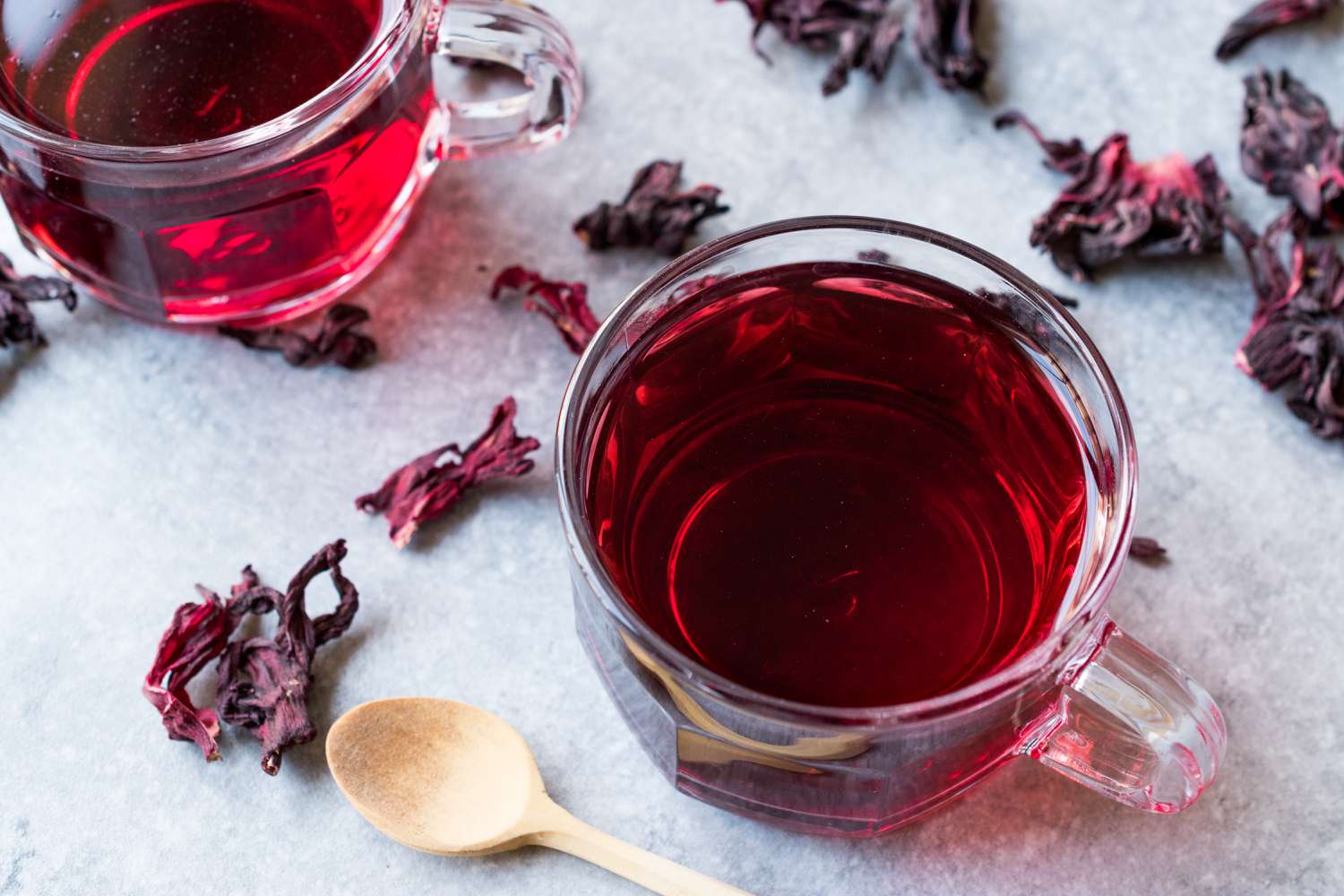Lately, it seems that you can’t peruse the grocery aisles—or a cocktail menu—without encountering hibiscus in teas, libations, and sundry products. What is hibiscus, exactly, and why is it having such a rose-colored moment? It turns out that this trending plant is more than passing fancy—it’s just taken a few centuries to go mainstream. We connected with the founders of a specialty tea company to find out what’s brewing with this buzzy ingredient.
- Esha Chhabra, co-founder of Alaya Tea, a loose-tea company that sources its organic and regenerative organic teas from small farmers and tea estates in India
- Smita Satiani, co-founder of Alaya Tea
What Is Hibiscus?
Grown as an annual and a perennial in temperate and tropical climates, hibiscus resembles a tentacled sea creature. This genus of woody shrubs and small trees is enrobed with trumpet-shaped flowers in vivid shades of pink, purple, blue, and red, each boasting a prominent filament. It’s part of the mallow family (Malvaceae), which includes okra, hollyhock, marshmallow, rose of Sharon, and cotton.
Varieties Abound
There are several varieties of hibiscus flowers, for example, the Hawaiian hibiscus you see in tropical climates, but they are not all intended for consumption, says Smita Satiani co-founder of Alaya Tea, which sources its hibiscus from a regenerative organic-certified supplier in Uttar Pradesh, India. “The edible variety used for cooking is called Hibiscus sabdariffa, also known as hibiscus roselle, or Jamaican sorrel,” she says, noting that it’s extremely popular in South Asia, Africa, and the Caribbean.
Why Hibiscus Is So Prized
This shrub species is likely native to West Africa, where it’s been a key ingredient in drinks like Senegalese bissap for centuries. “Hibiscus has been used in cultures for eons,” says Esha Chhabra, Alaya Tea’s other co-founder. Hibiscus is venerated for several reasons:
- Superfood status: Edible hibiscus is rich in antioxidants, including beta-carotene, vitamin C, and anthocyanin.
- Unique taste: Uniquely floral and sour, hibiscus is beloved for its tangy flavor and is integral to tropical cuisine.
- Shades of red: When hibiscus is steeped, the liquid turns a rich cranberry hue. “The color is so vibrant that it’s really eye-catching and beautiful. They say we eat with our eyes, right?” says Chhabra.
- Medicinal benefits: Hibiscus has antibacterial and astringent properties and is used as a diuretic and to combat inflammation, colds, and sore throats.
“Given that we’re an Indian company, it’s worth noting that hibiscus has been used in the subcontinent for a multitude of things,” says Chhabra. She says it lends a slight reddish tint to hair when combined with henna, and it’s implemented as a dye for clothing and a tint for natural cosmetics. “Its cooling properties are also used in Ayurveda to balance out body types that are high in pitta (heat),” she says, referring to the medicinal system that strives to maintain equilibrium in the body through diet and herbal remedies.
What Parts of the Plant Do We Use?
Though marketed in teas and other comestibles as hibiscus flowers, that description is sort of a misnomer: The part of Hibiscus sabdariffa that we eat and drink is not the actual flower. “When you read the words ‘hibiscus flowers,’ you might think they are the petals of the hibiscus flower, but actually it is the leafy, outer calyx fruit that is plucked in its peak, separated from the seed inside, and dried to use for cooking,” Satiani says. A calyx is the collective term for the sepals of all blooms—sepals are typically green, but in hibiscus, they’re red, and the flavor is markedly sour.
How to Use Hibiscus in Different Forms
Hibiscus can be purchased in a few different forms.
- Dried hibiscus: Abundantly available, dried hibiscus is universally used to make tea (iced hibiscus is particularly refreshing). “I’ve also eaten the calyxes whole, in dried form, like a dried fruit. It was a delicious, chewy, tangy, tart (not to mention healthy) snack,” Satiani says.
- Hibiscus powder: When finely milled. the powder can be added to rubs, infusions, and sweets galore.
- Fresh hibiscus: Juicy and plump, fresh hibiscus isn’t as easy to come across. It can sometimes be found at farmers markets in southern states or big-city markets with a Caribbean following. Labay Market in Brooklyn’s Little Caribbean neighborhood, for example, imports fresh roselle from the owner’s family farm in Grenada. “If you buy it fresh, use it immediately, or freeze or dry it,” says Satiani.
- Leaves and Shoots: In addition to the calyxes, the leaves and tender shoots of the roselle are also edible, says Satiani. If you find them at a market, use them in salads or cooked as greens, and with other vegetables and meat.
Other Ways to Eat and Drink Hibiscus
Hibiscus tea is the best-known way to use the calyxes and can be made with both fresh and dried flowers. Hibiscus can be steeped in cold water to make the zingy Mexican drink, aqua fresca, added to the pan juices of roast duck or pork or even a pot of rice (think pink!). It can also be infused intosimple syrup, adding a rosy tint to alcoholic and non-alcoholic beverages. Or try these other hibiscus applications:
- Cool treats: “I love it transformed into a sorbet (hibiscus and raspberry, or hibiscus and strawberry) or a granita,” says Chhabra. Stirred into ice cream makes for a pretty punch of color and flavor.
- Baked goods: Dried hibiscus can be crushed and added to everything from cookies to cakes.
- Salad dressing: Added to vinaigrettes, it perks up summer salads.
- Cereal: A rosy sprinkle over granola or oatmeal brightens up breakfast.
- Jams and marmalades: “Jams are another popular way to use hibiscus. Paired with orange or rose, it’s a winner,” says Chhabra.
